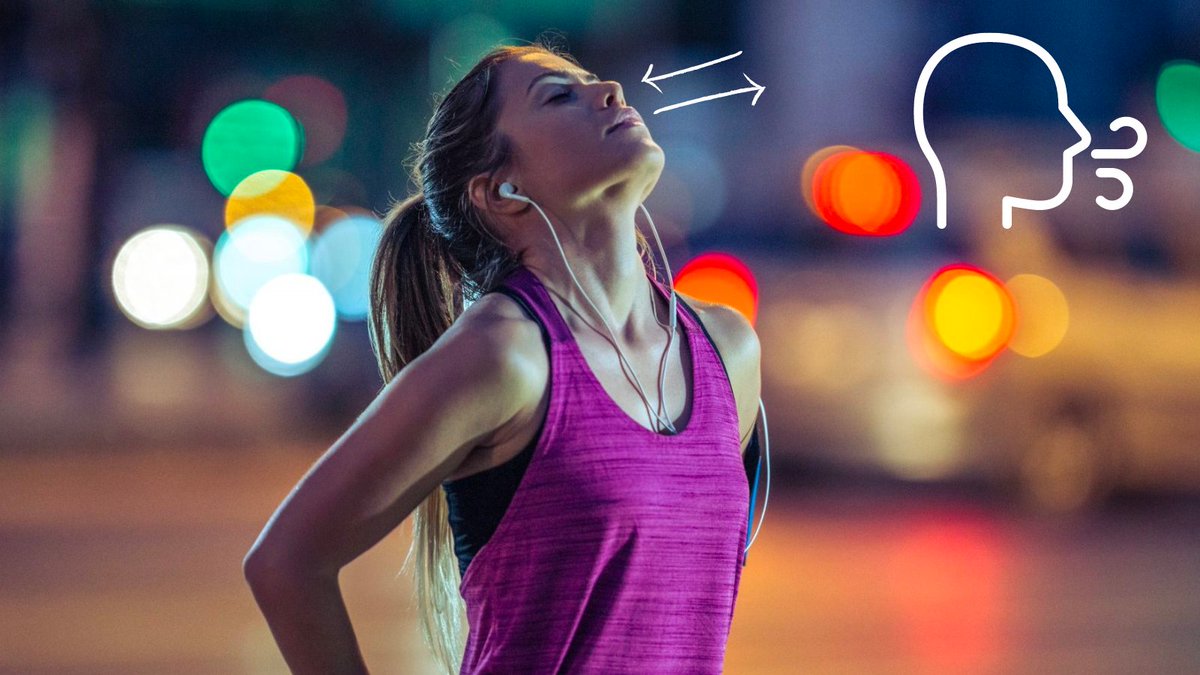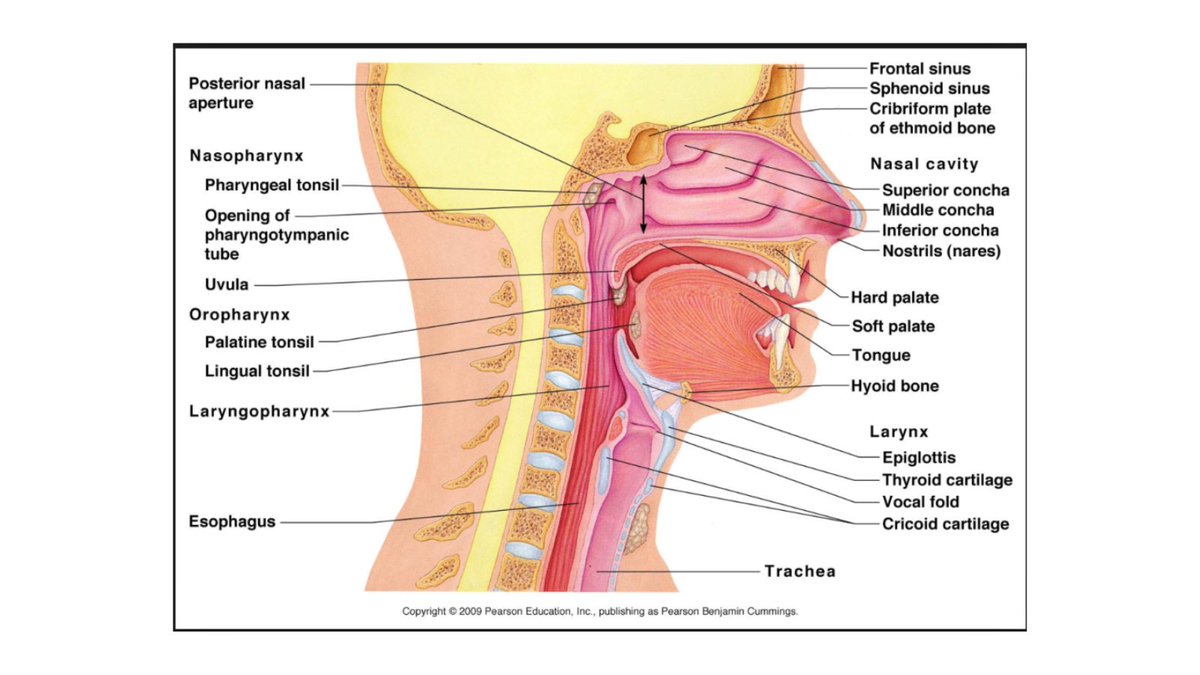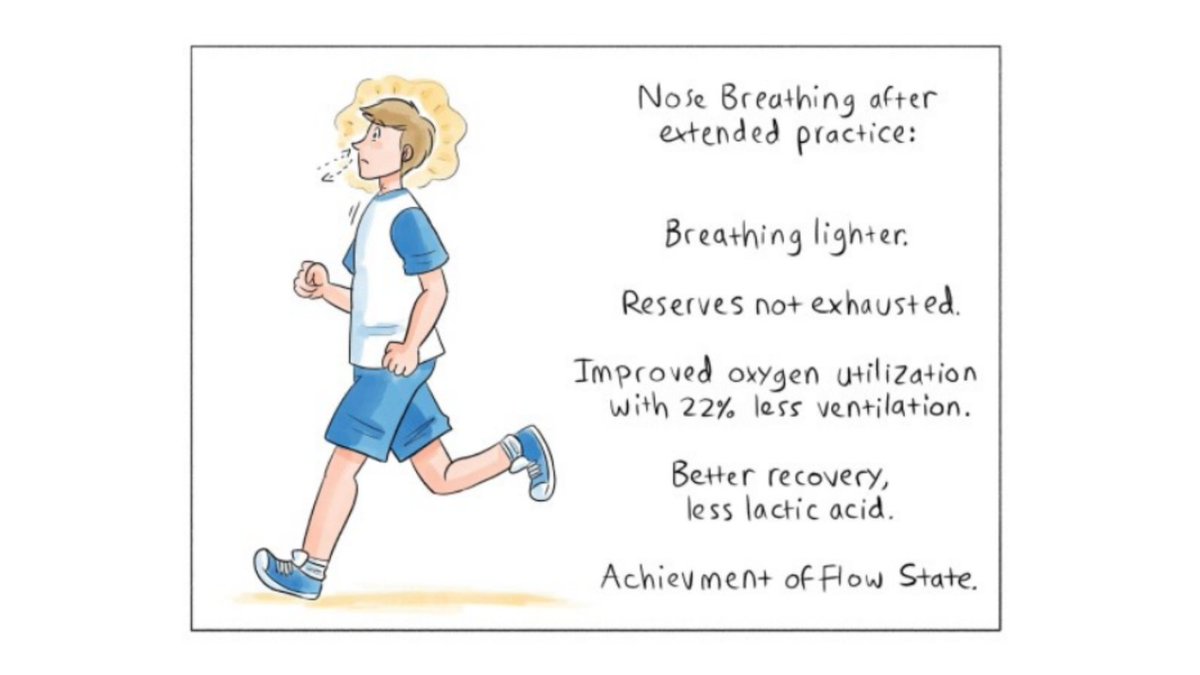
The RootCause Doctor@TheRootCauseCo
Jul 31, 2022
15 tweets
How you should breathe when you a run
// A Thread //
When you run, your body uses more oxygen. As your muscles warm up, they produce more carbon dioxide.
Carbon dioxide causes the hemoglobin in red blood cells to release oxygen to the working muscles, where the cells use it to make energy.
When we exercise, mouth breathing is faster. It helps you take in a larger volume of air. It feels the most comfortable with intense exercise, like sprinting.
But is this always the best strategy?
First, if you are unfamiliar with the idea of nasal breathing, check out my master thread below:
twitter.com/TheRootCauseCo

The RootCause Doctor@TheRootCauseCo
Jul 10 22
View on Twitter
Mouth breathing can destroy your health:
- Dehydration, dry mouth, & bad breath
- Dental problems & facial differences
- Malocclusion, crooked teeth, cavities
- Fatigue & poor concentration
- Worsens high blood pressure, diabetes, etc
Here are some resources to learn:
When you breathe through your nose air is filtered and warmed before it enters the lungs. It adds moisture and protects your airways from irritation and dehydration.
Nasal breathing engages the diaphragm muscle, provides core musculature stimulation, and improves stamina.
BENEFITS OF NASAL BREATHING WHEN RUNNING
- Increased O2 uptake
- Increased O2 delivery to working muscles
- Improved functional breathing
- Conservation of moisture to help prevent dehydration
- Reduced exercise-induced bronchoconstriction
- Improved and faster recovery
Nasal breathing is more effective and efficient, allowing more oxygen to reach active tissues.
Breathing through the nose releases nitric oxide, which is necessary to increase carbon dioxide (CO2) in the blood, which, in turn, is what releases oxygen.
researchgate.net/publication/32
Studies find that runners’ respiratory rate, breaths per minute, and the ratio of oxygen intake to carbon dioxide output decrease during nasal breathing.
This is because of the lower breath rate used during nasal breathing, which allows more time for oxygen to get to the blood.
With an adaptation period, nasal breathing during exercise may cause reduced BR, reduced hypocapnia, and increased nitric oxide production.
frontiersin.org/articles/10.33
While nasal breathing does utilize a smaller airway, it appears to increase diaphragmatic function.
Some studies have reported favorable performance effects, such as decreased respiratory exchange ratio, VO2, and increased running economy and time to exhaustion.
Although there is limited evidence on the psychophysiological correlates of nasal breathing during exercise, studies suggest that nasal breathing at rest leads to improved cognitive function, emotional appraisal, memory, and lower perception of fear.
The first time you try breathing through your nose while you’re running it may be challenging.
Accommodation varies but can take up to 6-8 weeks. Incorporate nasal breaths during easier runs. Over time you’ll find that your body adjusts & breathing gradually becomes much easier.
But do not force it. If you feel like you're not getting enough air, slow down, change the frequency of breaths, open your mouth, or stop running until you regain your breath.
When sprinting for short distances and periods, mouth breathing can actually be an advantage.
@Andrew D. Huberman, Ph.D. shares some thoughts on rapid inhale strategies when running for performance.
youtube.com/watch?v=msGKrc

The RootCause Doctor
@TheRootCauseCo
Your home for all things health, wellness, and independence. Stay healthy naturally. Doctor of Physical Therapy.
Missing some tweets in this thread? Or failed to load images or videos? You can try to .





